By Robert Kearns, Executive Committee and Outings Chair
Smelt Brook is partly a hidden stream. Through the settlement of Weymouth and Braintree, Massachusetts in the Landing, it has been channelized and covered by roads, sidewalks, and buildings. The land, historically salt marshes, streambed, and banks were greater valued as industrial and commercial properties in colonial times and the industrial revolution as the shipbuilding industry. In the early 20th century, prior to the wetlands protection act, salt marshes and tidelands were reclaimed and turned into parking lots for nearby storefronts.
People disregarded the scenic, and natural values and ecosystem services of their environment. The development of the floodplains of Smelt Brook, the destruction of previous or absorbent surfaces, and the direction of the brook into small, undersized channels under the village square led to frequent flooding in the 20th century.
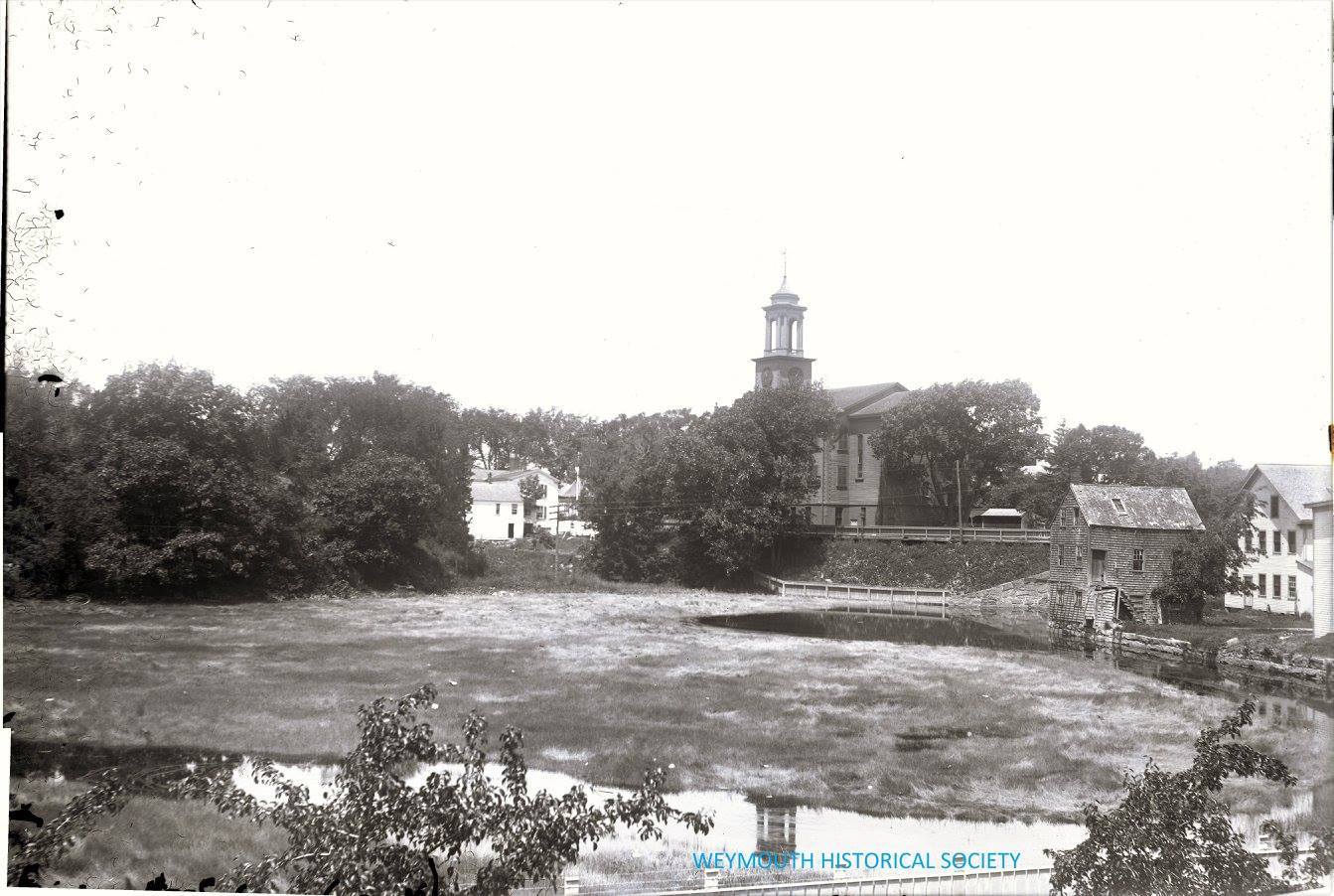
Historic Photo of Smelt Brook (Weymouth Historical Society)
The 19th and 20th century way of dealing with flooding problems was to harden with concrete infrastructure, dams, dikes, and channels, with little regard for natural ecosystem services. The view of infrastructure and so-called progress was to conquer nature. The brook was altered as a part of a 1976 Army Corps of Engineers Local Protection Project. The flood control project created a separate reinforced concrete flood control tunnel, a fish gate at the original streambed to redirect floodwaters into the flood control tunnel, as well as a perched culvert and stilling basin along Brookside Road.
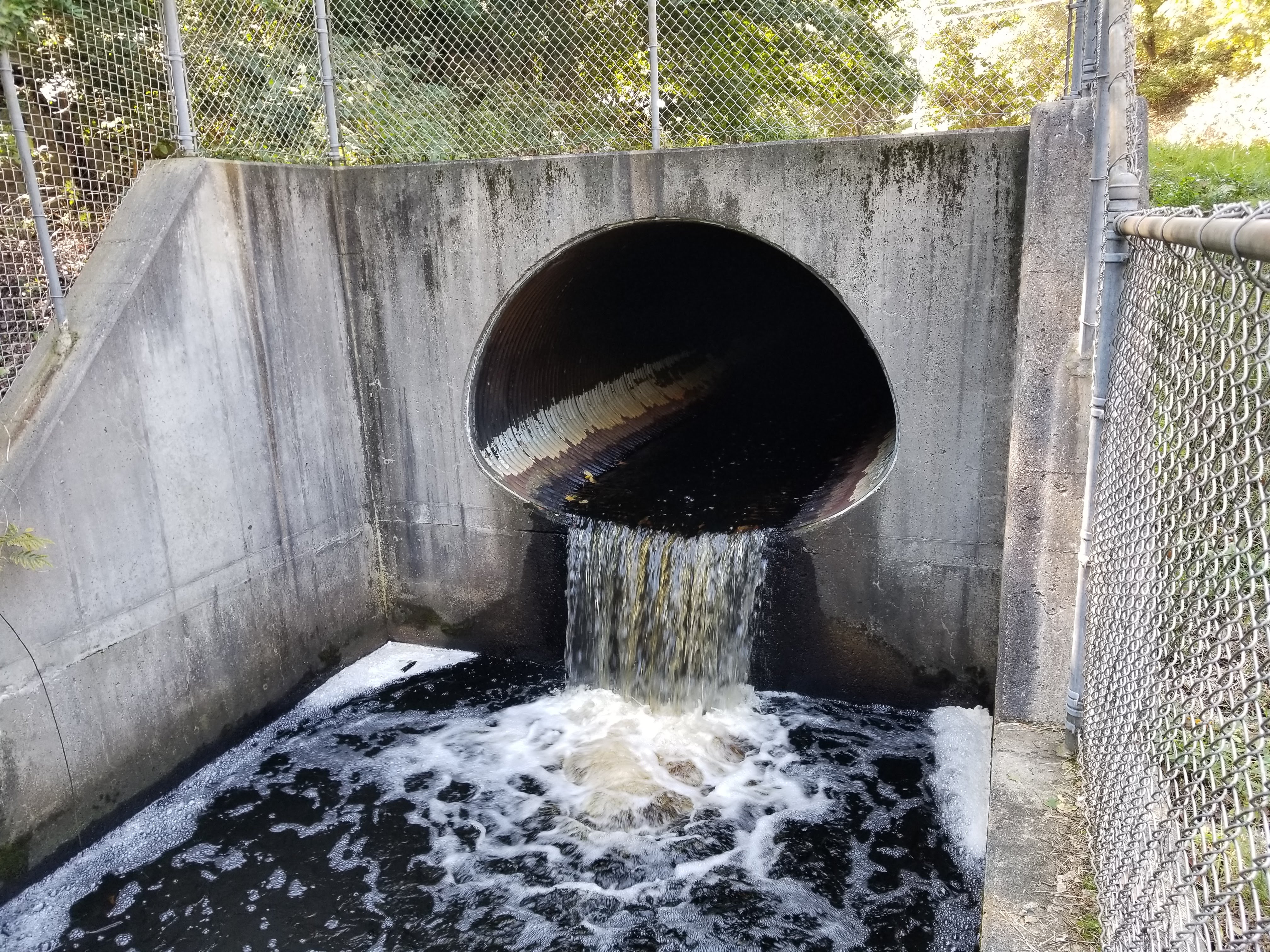
Perched Culvert on Brookside Road where the fish can not pass (Robert Kearns)
The playbook for infrastructure has changed with the realization of climate change, and the values of natural services of our natural environment such as flood storage and protection. This was the start of a transition to a viewpoint of working with nature. The Charles River Natural Flood Storage was a leading achievement in valuing the flood storage services of natural wetlands and floodplains.
The Town of Weymouth under Mayor Bob Hedlund is spearheading the Smelt Brook Daylighting Project. The town is obligated to daylight the brook as a part of environmental mitigation to the nearby Greenbush Line MBTA Station. Previous administrations of Weymouth have dropped the ball and failed their obligation to build the project for years after the Greenbush Line was put into service in 2007.
The daylighting project is finally under construction. 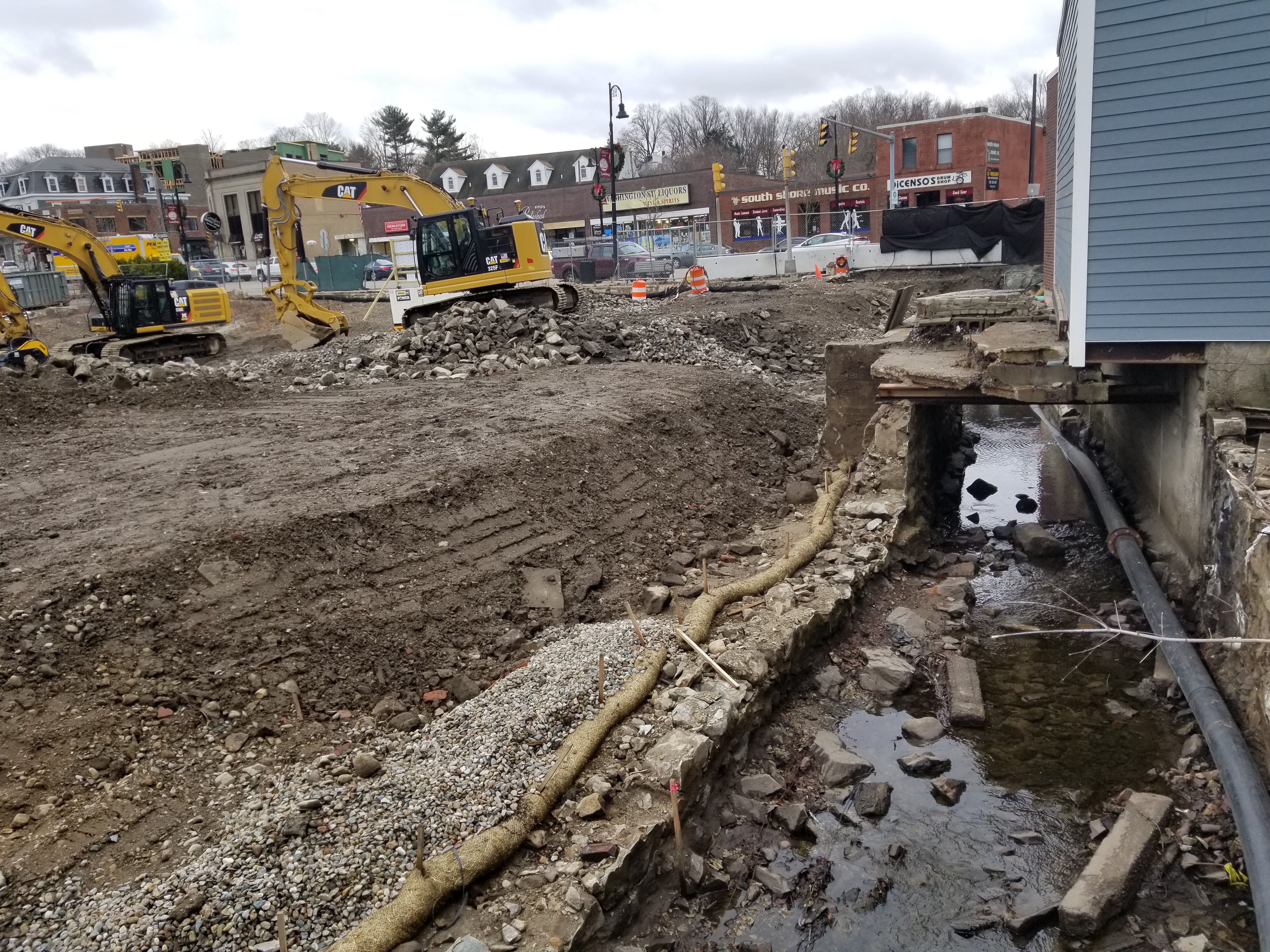
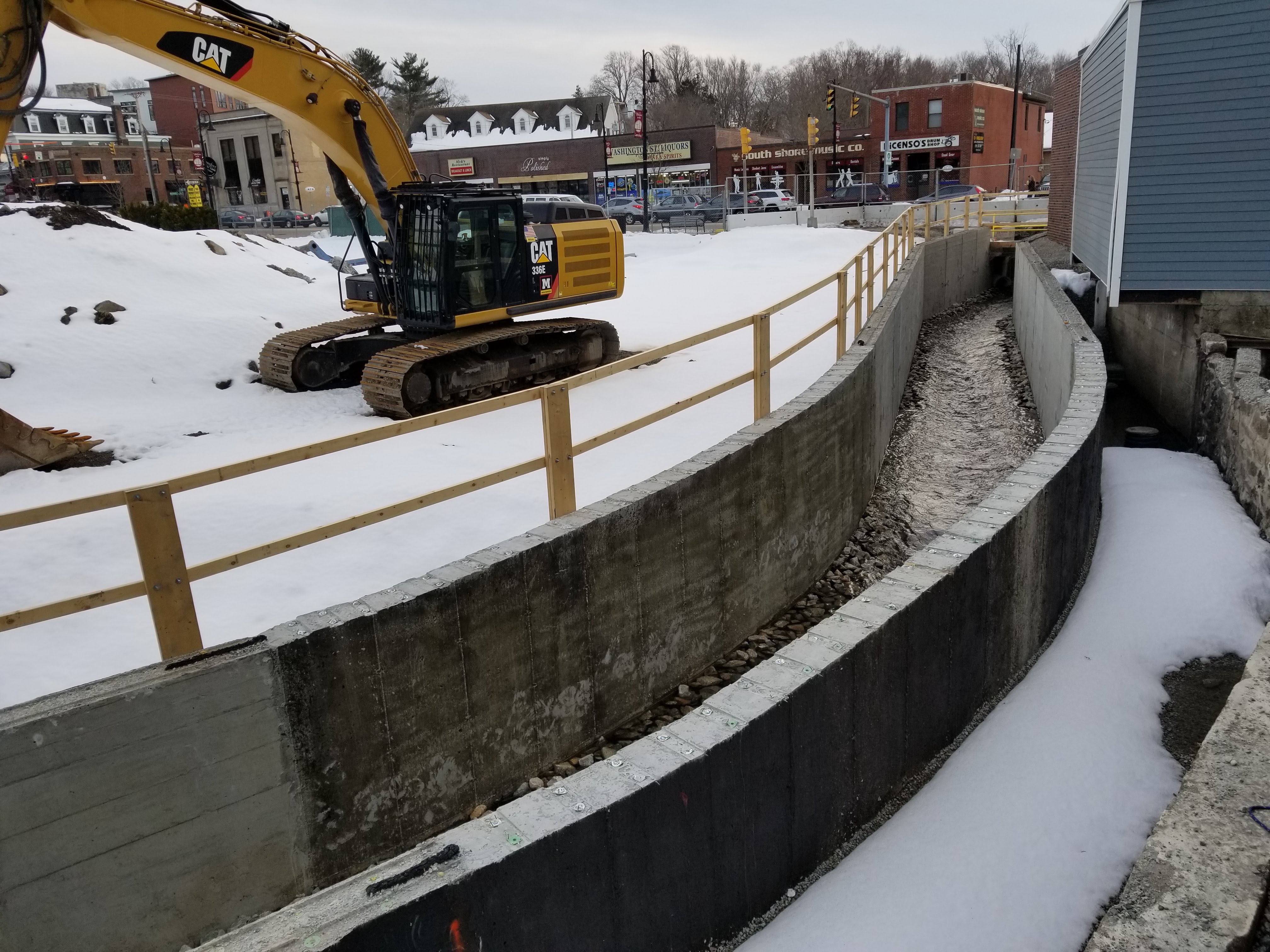
Construction Progress of Daylighting Smelt Brook (Robert Kearns)
The project includes replacing an aging culvert underneath Commercial Street, opening up Smelt Brook and creating a small public park in the landing so residents and visitors alike can view Smelt Brook in the two towns’ shared village center. The culvert underneath Commercial Street is in poor condition and needed replacement, like much of our crumbling infrastructure across our nation. There have been similar daylighting projects have been done in Boston with the Muddy River, and fellow advocates have proposed restoring wetlands and daylighting a the Bass River in Wydett Circle.
Cooperation between the Town of Weymouth under Mayor Bob Hedlund and Town of Braintree under Mayor Joe Sullivan was needed for the success of the daylighting. The project is on the town line and was approved by both towns’ conservation commissions. The daylighting and commercial street culvert project received two MassWorks Infrastructure Grants with a combined $2.2 million from Governor Baker’s Administration. The MassWorks grant shows the governor’s commitment to redevelopment, ecological restoration, and infrastructure improvements.
The restoration of Smelt Brook is far from over. A reminder of the conquer nature with concrete flood control mindset of the past, the perched culvert on Brookside Road hangs several feet high above the streambed blocking rainbow smelt from migrating further upstream to spawn. A big step forward was the Town of Braintree and Weymouth’s financial commitment for an Army Corps of Engineers 1135 environmental restoration study of the Smelt Brook Local Protection Project. Read our letter of support for the project.
In the 1135 restoration study, the Army Corps will determine the most cost-effective way to restore fish passage, improve stream and provide public access by restoring a historic park on Brookside Road. The study will also look at whether the fish gate needs to be replaced. The study is funded in half by the local governments and half by the Army Corps. Project construction and design are funded 75 percent by the federal Army Corps and 25 percent by the local governments.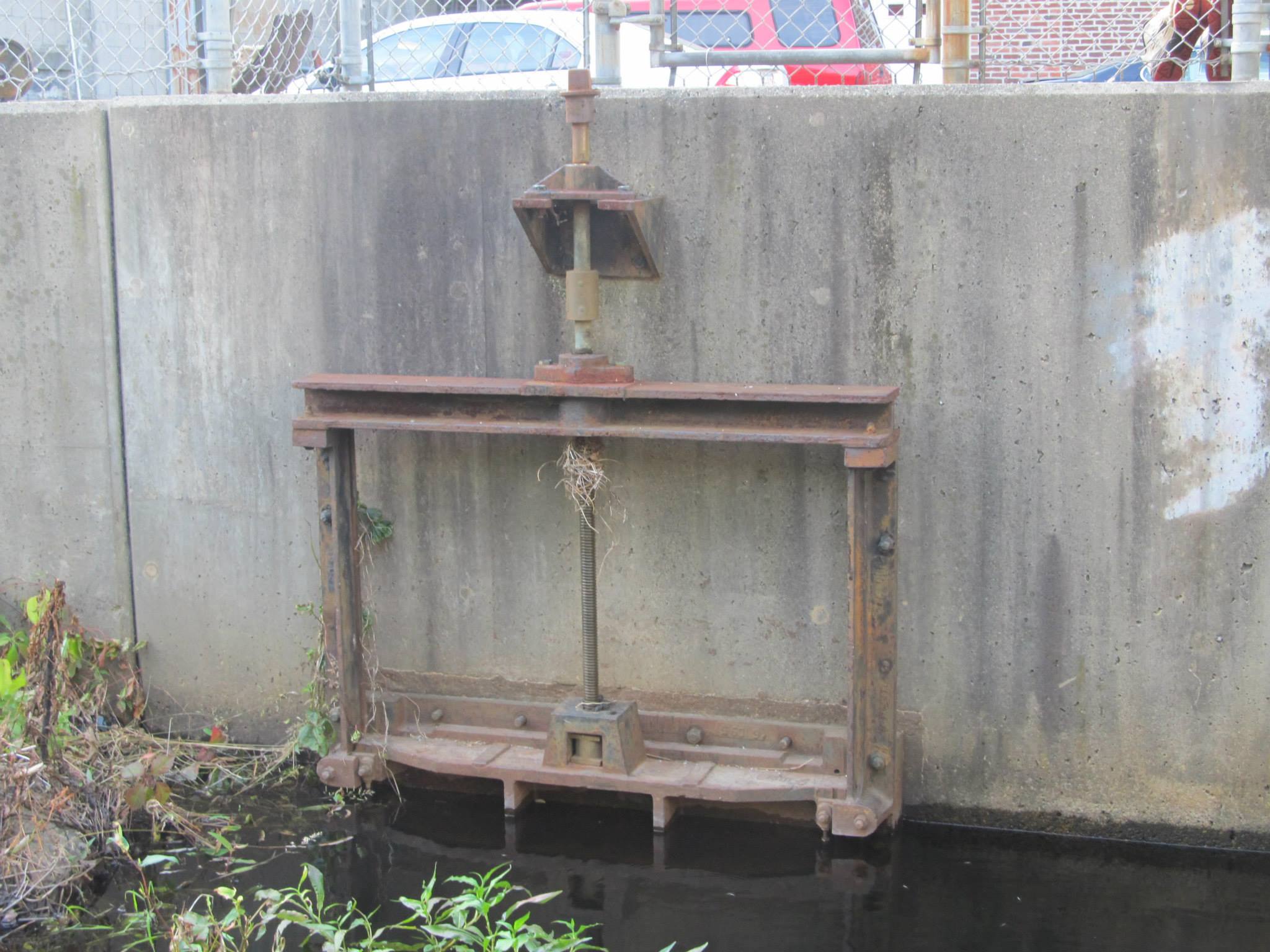
Smelt Brook Fish Gate (Robert Kearns)
With public support for the restoration study, the Community Preservation Committees, Town Councils and Mayors of both Braintree and Weymouth all supported $65,000 in funding from each town for the study. The commitment of the two towns to the environmental restoration study shows the successful cooperation of local governments in a time where division on the federal level is at an all-time high.
With the realities of a changing climate and a history of a lack of investment in our crumbling infrastructure, there is much more work to be done. Cities, towns, and the commonwealth must lead by putting ecological restoration and resiliency in the center of focus in infrastructure improvements. Furthermore, state and local governments should inventory their stream crossings for aquatic wildlife connectivity and higher precipitation and hydrological data for a changing climate. When making decisions for future infrastructure projects, we must build it right the first time by working with nature, prioritizing aquatic wildlife connectivity, natural ecosystem services and the realities of a changing climate.
Robert Kearns is a Member of the Executive Committee and Outings Chair of the Sierra Club Massachusetts Chapter.